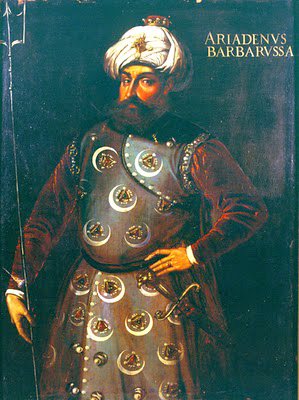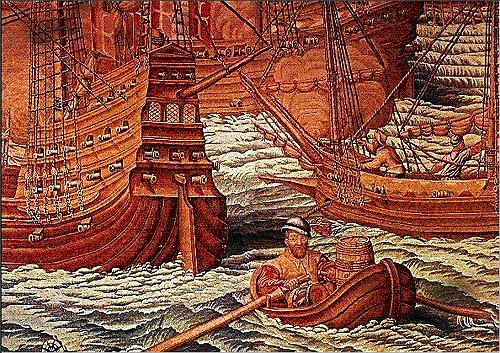
The Conquest of Tunisia

Barbarossa Hayreddin Pasha called himself a Turkish admiral. But we know better. He was a pirate, perhaps the closest one to the common conception we have of pirates nowadays, the 'red bearded', ruthless swashbuckler, more process-driven than result-driven in his quest for adventure and a life of adventure.
For decades he dominated the Mediterranean sea, terrorizing one nation after the other under the supervision (and permission) of the Ottoman government. In 1510 he went to the African coast and decided to establish himself there. This allowed his crew of pirates to start controlling other areas in the north of Africa. It was a very lucrative decision. Algiers, for instance, provided them with great riches and a place in history, since they destroyed the stability of an area that still hasn't gotten it back.
As it happened, Spain and other economies were also interested in Africa. They were slowly but surely conquering territories, spreading what Spanish was learned in Seville to the other coasts. This worked perfectly for Hayreddin. It meant he could effortlessly count on an incessant supply of Christian slaves to sell to North Africa. If his victims were wealthy enough, he could ask for a ransom and make more money out of that.
In fact, Tunisia was so lucrative that Hayreddin decided to settle indefinitely. He kicked the Tunisian ruler, Mulay Hassan, out of the country and, in 1534 named himself Bey. Tunisia became part of the Ottoman Empire.
Conquest of Tunisia

Among the Spanish lessons Spain had learned was to not allow the Ottoman to go very far. See, the Ottoman Empirewas perceived in a similar way to the Klingons in Star Trek. Perennial bad guys who cannot be defeated and are always out of line. So when Mulay Hassan turned to Charles V for help, he needed no more incentive to attack Tunisia. After all, Heyreddin had already tried to attack Spanish Valencia in the summer of 1515 with little success.
And Charles was feeling pretty invincible lately, what with ruling over most of Europe and having crushed the Comunero protest without lifting a finger. He sent over 200 vessels from the shores of Barcelona to Tunisia on March 29, the 1535. A little more than 3 weeks later, Tunisia was garrison and returned to the hands of Mulay Hassan. 20,000 Christian slaves were freed. The Conquest of Tunisia was a success.
It was a wise investment, after all. Mulay Hassan became a Spanish vassal and put an end to further Christian slavery. It was one thing to enslave Africans and heathens. Slaving Christians was just not kosher.
Flip-Flopping With Real Estate
Since Spain was feeling lucky, they also garrisoned the nearby city of Bone and left it Hassan's command. This started process of to-ing and fro-ing that would keep the military entertained during rainy afternoons - Bone was lost five years later (1540). This was a blow in the credibility of poor Mulay Hassan, who was overthrown by his son Mulay Ahmad. The Ottoman Empire returned to Tunisia in 1570 and conquered it again. So Spain had to go back and re-conquer it, with a new Conquest of Tunisia campaign, (that was a job for Don Juan d'Austria, King Philip II's half-brother). Which just made the Ottoman troops to return and conquer it again.
Spain decided to give up and just be content with Ceuta, Melilla and Oran. Nobody was able to stand up to the pirates for 300 years.
